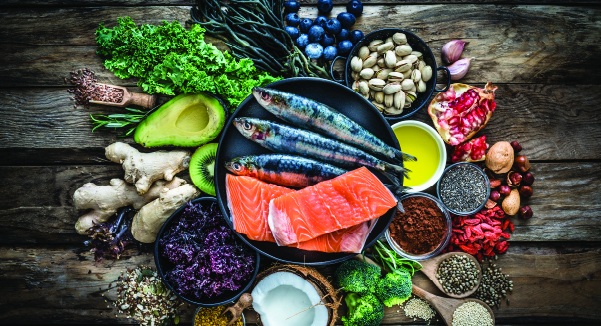Best Spices for Arthritis
Season your food with these anti-inflammatory spices.
Often when prepping a meal, food is the primary focus and spices are an afterthought. But when following an anti-inflammatory diet, it’s important to not overlook the benefits of certain spices to season your meals.
“I think people are often surprised at what a great anti-inflammatory source spices can be,” says board-certified sports dietitian Kim Larson, a national spokesperson for the Academy of Nutrition & Dietetics. “But the more anti-inflammatory foods and spices you eat, the more you are tamping down on chronic inflammation.”
Your spice rack is about to feel very important. Turmeric, ginger, cinnamon and friends are not just there to rescue bland dinners. This article explains which spices stand out and what the research says, without hype or confusion. Help others access health information that makes sense.
Consider a gift today.
Anti-inflammatory Spice Basics
When you have arthritis, your joints and sometimes other parts of your body become inflamed, and many spices inhibit certain inflammatory pathways in the body. And although a dash of cinnamon may not seem like a lot, spices can pack a significant punch when you consume them throughout the day.
“If you do a sprinkle of cinnamon in oatmeal or a smoothie, have some ginger tea mid-morning and something with pepper and garlic for lunch and dinner, it can certainly have an additive effect,” explains Beth McDonald, a nutritionist at The Center for Health and Healing in the Department of Integrative Medicine at Mount Sinai Beth Israel Hospital in New York City. Try to experiment with new recipes and incorporate a spice with an anti -inflammatory benefit with every meal, she says.
With that in mind, here are some anti-inflammatory spices to consider the next time you are in the kitchen.
Garlic
Garlic is a tasty addition to just about any savory dish. Like onions and leeks, it contains diallyl disulfide, an anti-inflammatory compound that limits the effects of pro-inflammatory cytokines. Therefore, garlic can help fight inflammation and may even help prevent cartilage damage from arthritis.
Tip: Opt for fresh garlic from the produce section of your market. Preservatives may be added to bottled garlic and processing, which may decrease some of its strength.
Turmeric
Curcumin is the active chemical in turmeric root; it blocks inflammatory cytokines and enzymes in two inflammatory pathways. Several human trials have shown an anti-inflammatory benefit, which can translate to reduced joint pain and swelling. The yellow spice is popular in curries and other Indian dishes.
Tip: It is most effective when eaten with black pepper, which helps the body absorb it better.
Ginger
Gingerol and shogaol are the chemicals in ginger that block inflammation pathways in the body. Along with its anti-inflammatory properties, some studies have shown ginger can also reduce osteoarthritis symptoms, although other studies do not find such benefit.
Tips: Ginger is a versatile spice and can go in both sweet and savory dishes. It’s best to use it in its fresh form. A great way to add ginger to your diet is to boil it into a tea: Put a one- to two-inch piece of fresh ginger root in boiling water for 30 to 60 minutes.
Cinnamon
Cinnamon contains cinnamaldehyde and cinnamic acid, both of which have antioxidant properties that help inhibit cell damage caused by free radicals. However, studies say more research is needed to make formal recommendations about its use.
Tip: Cinnamon is delicious mixed with oatmeal or added to smoothies, but it’s not strong enough on its own to offer a therapeutic effect. Used in combination with other foods and spices, it may offer a cumulative anti-inflammatory effect over the course of the day.
Cayenne
Chili peppers contain natural compounds called capsaicinoids, which have anti-inflammatory properties. Cayenne and other dried chilies spice up sauces, marinades and rubs.
Tip: Chilies can be hot, so start with just a dash or two.
General Tips for Using Spices
When trying a new spice, start small and add more after you’ve taste-tested your dish. Anywhere from a half teaspoon to a full teaspoon is generally a good place to start for most spices, except cayenne (start with a ¼ tsp or less). A good rule of thumb with spices is “fresh is best.” But experts say bottled spices can pack a punch too. “Spices are already dehydrated so the antioxidants are concentrated in a small, powerful amount,” Larson explains.
Remember the wide variety of foods you can spice up. They are wonderful in rubs, marinades and sauces; on steamed or roasted vegetables; mixed into pasta, potatoes, rice, couscous and quinoa; and in soups and stews.
Helpful health information does not need to be complicated to be powerful.
Your gift helps ensure this trusted content remains available for all.

Stay in the Know. Live in the Yes.
Get involved with the arthritis community. Tell us a little about yourself and, based on your interests, you’ll receive emails packed with the latest information and resources to live your best life and connect with others.




